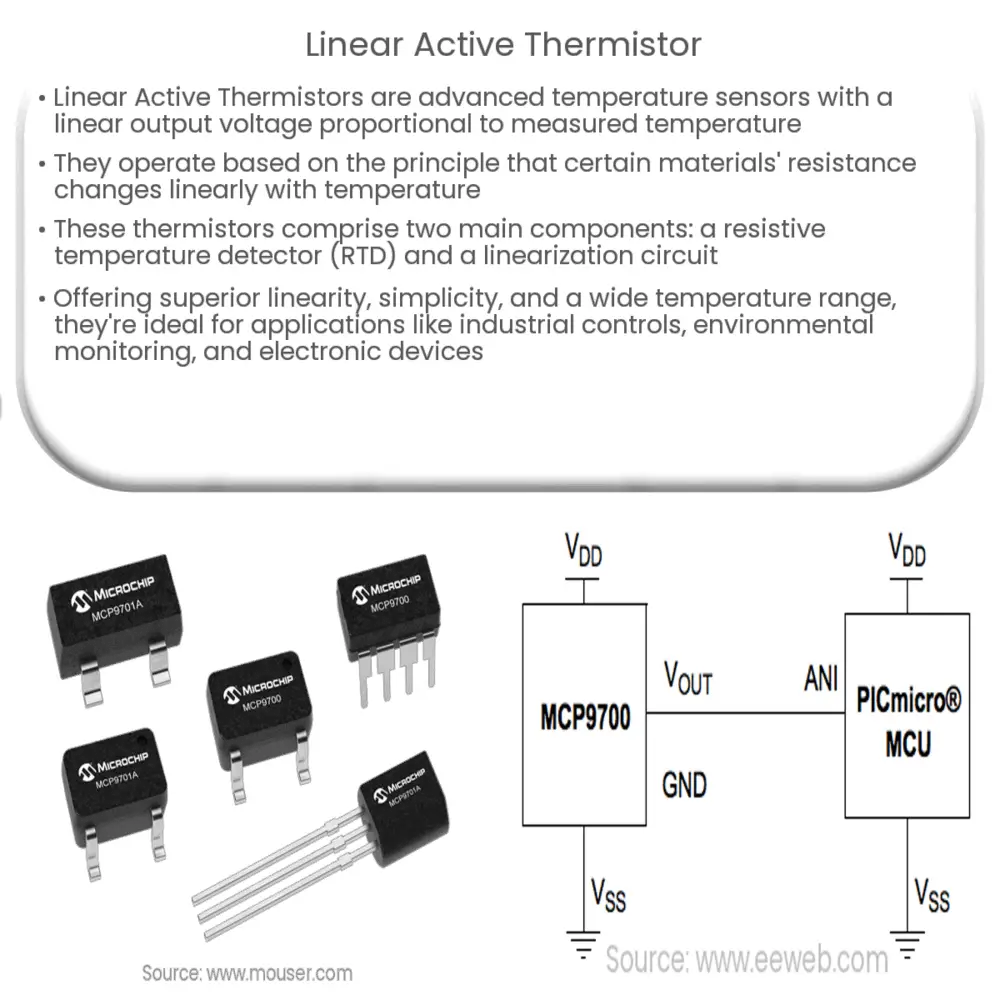Explore the principles, advantages, construction, and applications of Linear Active Thermistors in our comprehensive guide.

Introduction to Linear Active Thermistor
A Linear Active Thermistor is an advanced type of temperature sensing element that features a unique design. It simplifies the process of temperature measurement, thereby enhancing the efficiency of various devices that incorporate temperature monitoring functions. Unlike traditional thermistors, Linear Active Thermistors are designed to produce a linear output voltage, which is directly proportional to the temperature they measure. This article provides a comprehensive overview of the principles and applications of Linear Active Thermistors.
Principles of Linear Active Thermistor
The Linear Active Thermistor operates on the principle that the resistance of certain materials changes linearly with temperature. The materials used in these thermistors exhibit a predictable and consistent change in resistance with temperature variations, which is captured and converted into a voltage output.
Typically, a Linear Active Thermistor consists of two key components: a resistive temperature detector (RTD) and a linearization circuit. The RTD is made of a material with a linear temperature-resistance relationship. It is embedded in the thermistor to detect the temperature. The linearization circuit, on the other hand, is an integral part of the thermistor that converts the resistance change into a linear voltage signal.
Advantages of Linear Active Thermistors
There are several advantages associated with the use of Linear Active Thermistors. Below is a list detailing some of these advantages:
Applications of Linear Active Thermistors
Linear Active Thermistors find applications in several fields due to their unique properties. Here are a few notable examples:
To understand this subject in more depth, it is crucial to delve into the construction and functioning of Linear Active Thermistors, which will be explored in the next part of this article.
Construction of Linear Active Thermistors
Linear Active Thermistors are meticulously designed to perform their intended function accurately. A typical thermistor construction includes a resistive temperature detector (RTD) and a linearization circuit. The RTD, often composed of platinum or a similar material, exhibits a linear relationship between temperature and resistance. This allows for reliable detection of temperature changes.
The linearization circuit is a crucial component that translates the resistance changes into a linear voltage signal. This signal can then be easily interpreted by the associated control or monitoring systems. The thermistor is typically encapsulated in a protective casing to ensure its longevity and resistance to environmental conditions.
Functioning of Linear Active Thermistors
The functioning of a Linear Active Thermistor can be broken down into two key stages. First, the RTD detects a change in temperature, which alters its resistance. The magnitude of this resistance change is directly proportional to the temperature variation. This resistance change is then fed into the linearization circuit.
The linearization circuit, a part of the thermistor, transforms this resistance change into a linear voltage signal. This conversion is based on the known relationship between temperature and resistance for the specific RTD material. Thus, the output voltage of the thermistor is a direct and linear representation of the temperature, simplifying the interpretation and further processing of the data.
Conclusion
Linear Active Thermistors represent a significant evolution in temperature sensing technology. Their high linearity, simplicity, and wide operating range make them an excellent choice for precise temperature measurements across a variety of applications. From industrial control systems to environmental monitoring and electronics, they provide an efficient and reliable means of temperature regulation and monitoring.
Understanding the principles, construction, and functioning of Linear Active Thermistors is essential for leveraging their potential. As technology continues to advance and demand for accurate temperature measurements increases, the role of Linear Active Thermistors is likely to become even more prominent in the future.




